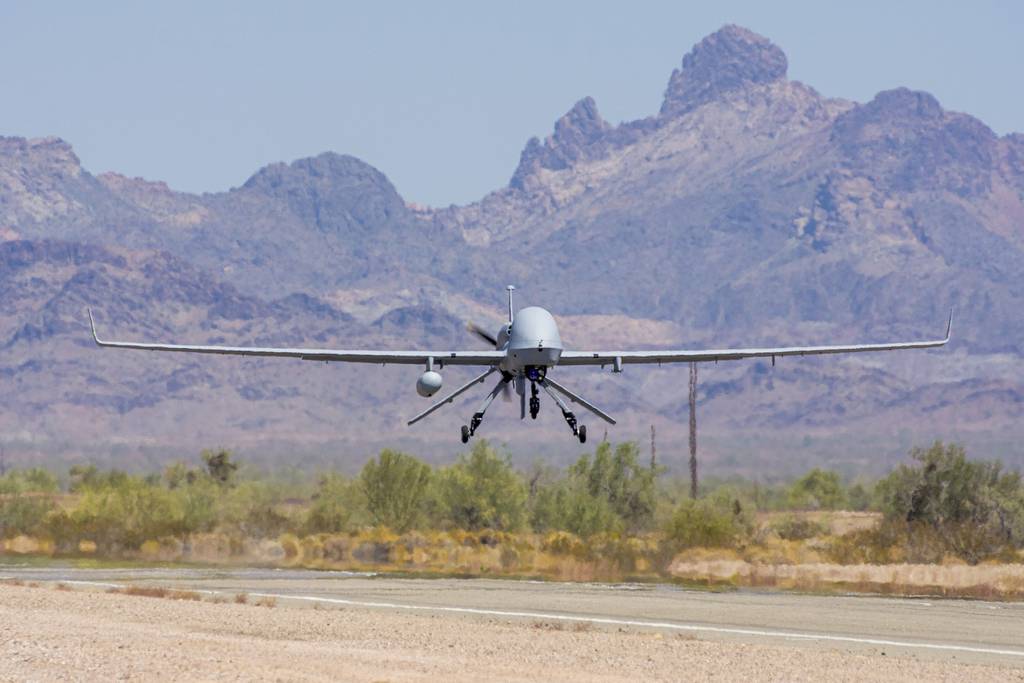DENVER — The National Geospatial-Intelligence Agency will take operational control of part of the Pentagon’s signature artificial intelligence program, the agency’s director announced April 25.
Project Maven is the Department of Defense’s most visible artificial intelligence tool, designed to process imagery and full-motion video from drones and automatically detect potential targets.
At the GEOINT Symposium in Denver, Colorado, NGA Director Vice Adm. Robert Sharp announced that his agency would take over operational control of Project Maven’s GEOINT AI services from the Office of the Under Secretary of Defense for Intelligence and Security under President Biden’s proposed budget for Fiscal Year 2023.
“That includes responsibility for labeled data, AI algorithms, test and evaluation capabilities, and the platform,” said Sharp. “From the NGA perspective, we very much appreciate his [Under Secretary of Defense for Intelligence and Security Ronald Moultrie] confidence, and this tremendous opportunity.”
The NGA is commonly understood as the intelligence agency in charge of processing and analyzing satellite imagery, but it also leads the intelligence community’s efforts to map the Earth and process other types of overhead imagery.
The agency has been heavily involved with Project Maven since it launched in 2017.
“It really started with this idea that commercial industry – Silicon Valley – had come up with techniques going back to, you know, 2008, 2009, when the sort of deep-learning kind of revolution happened,” NGA’s Deputy Director of Data and Digital Innovation Mark Munsell told reporters at the GEOINT Symposium. “The idea was, let’s bring in industry, let’s sort of translate what you’re doing in commercial. We want to give you some military scenarios to see how well you can do that.”
“It’s really DevOps in terms of bringing in a company, develop a model, test the model to learn from [it], see what the customers like about that particular AI model and then do it all over again and also get a sort of broad breadth of companies and capabilities to bring in,” he added.
The Department of Defense has worked to test Project Maven capabilities in demonstrations, including at Project Convergence, an annual U.S. Army exercise in the Arizona desert where the service tests its advanced battlefield technology. The Army equipped an MQ-1C Gray Eagle drone with a Maven Smart System and Algorithmic Inference Platform created through Project Maven. The system was one of several automatic or aided target recognition solutions tested in the desert.
NGA was a big part of Project Maven from the start, said Munsell, feeding data to companies to help them develop AI algorithms. Most of the lines of effort within Project Maven entail geospatial intelligence, he said.
“It made a lot of sense to take what they’ve learned and take the infrastructure they’ve built and the experience they’ve learned from the companies and find a GEOINT home for it,” said Munsell.
There will not be a pause in development when the agency takes over Project Maven, said Munsell, but it will bring in its own subject matters to assess the effort and better integrate it with the NGA’s other AI and computer vision initiatives.
The NGA has long worked to harness AI for its own missions in an attempt to manage the massive torrent of data flowing into the agency from government and commercial sources. Officials say there is too much data for human analysts to process, banking on AI to flag patterns that need further scrutiny from human operators. This concept of human-machine teaming is an important part of how the agency wants to operate moving forward.
“We already have ongoing efforts to leverage AI, and apply machine-learning algorithms to enable GEOINT analysis at scale,” said Sharp. “This move brings together two major DoD AI and ML [machine learning] efforts under one roof. And we’re proud that our close partnership with the OSD staff is actually what created Maven in the first place.”
Nathan Strout covers space, unmanned and intelligence systems for C4ISRNET.








